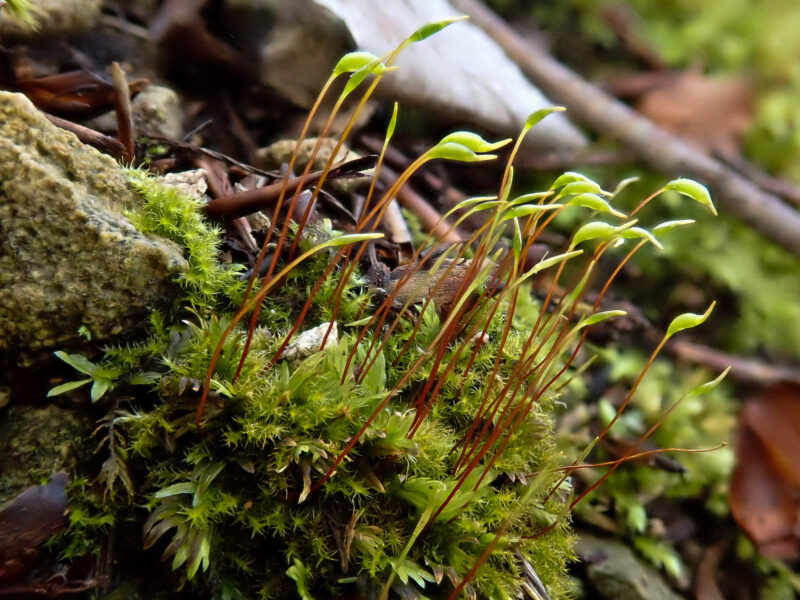Identification notes
This is a relatively common species of unshaded chalk and limestone grassland and other dryish calcareous habitats. It is more habitat-restricted than the similar-looking C. protensum and generally avoids the neutral soils and damp habitats sometimes frequented by that species.
Cited differences in the nerve (thin and reaching at least to mid-leaf in C. chrysophyllum, short and double in C. protensum) are often difficult to confirm with a hand-lens, so microscopic confirmation may be necessary.
Slender plants with a similar leaf-shape growing on shaded calcareous rock or exposed tree roots should be checked microscopically for the scarce Campylophyllopis calcarea, which has toothed leaves and prorate cells (where cells have a projection at one end which overlaps the end of the next cell).
Read the Field Guide account









